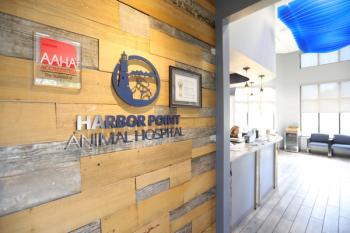
AVMA, CDC develop disease control strategy for shelters
Establishing routine feeding, exercise and bathing times might ease adjustment efforts.
SCHAUMBURG, ILL. — A new triage protocol was released for animals sheltered from disasters.
The guidelines, authored by the American Veterinary Medical Association (AVMA) and Centers for Disease Control and Prevention, are in response to massive animal displacement along the Gulf Coast region.
Released last month, the Interim Guidelines for Animal Health and Control of Disease Transmission in Pet Shelters advise workers dealing with displaced animals to wear protective clothing to avoid mucous membrane contact with droplets and toxic materials. They also advise that all animals be examined, bathed and inspected for parasites upon entering any shelter system.
"This is a reaction to Katrina," says Dr. Gail Golab, AVMA assistant director of professional and public affairs. "Considering the number of displaced animals, we've been getting a lot of requests for guidance."
In addition to the animal shelter strategy, guidelines for animal care within human shelters awaits CDC approval, Golab adds.
Inside the guidelines
Within animal shelters, intakes should accompany questions concerning an animal's health history if an owner is present as well as new health records for each animal that includes photographs and microchip scans. Cages should be clearly labeled with the animal's health status and temperament, the guidelines state.
While all animals need to be examined for flea or tick infestation, dogs should be treated prophylactically for internal parasites such as Giardia, roundworms, hookworms and whipworms. Animals with diarrheal disease should be separated from healthy animals to protect other intakes from nosocomial zoonotic agents such as Campylobacter, parvovirus and Salmonella, the guidelines state.
Behavioral concerns
While fear, panic, separation anxiety and other behavioral disorders are common in displaced animals, establishing routine feeding, exercise and bathing times might ease adjustment efforts. Behavioral exercises and medications may be administered short- or long-term to aid recovery, the guidelines recommend.
Experienced personnel should approach aggressive animals calmly but cautiously. Shelters are encouraged to seek assistance from qualified animal and veterinary behaviorists who can assist in meeting these needs.
Restraints or sedation are suggested for handling aggressive animals. Humane euthanasia is recommended for animals irreversibly ill or those exhibiting intractable signs of aggression, the guidelines add.
Caretaker protection measures
Personnel working with displaced animals should wash regularly with soap and water and wear gloves when handling sick or wounded animals The guidelines also advise handlers not to eat in animal care areas and, whenever possible, complete a three-dose prophylactic vaccination series for rabies.
Thick gloves can help prevent injury for bites and scratches. Because exposure histories of most displaced animals are unknown, the guidelines recommend that personnel bitten by dogs, cats and ferrets should be evaluated for rabies even if the animal appears healthy and has been vaccinated. Animals may be quarantined for 10 days for observation and should be rabies tested if they develop signs of the infectious disease, the guidelines state.
Newsletter
From exam room tips to practice management insights, get trusted veterinary news delivered straight to your inbox—subscribe to dvm360.




